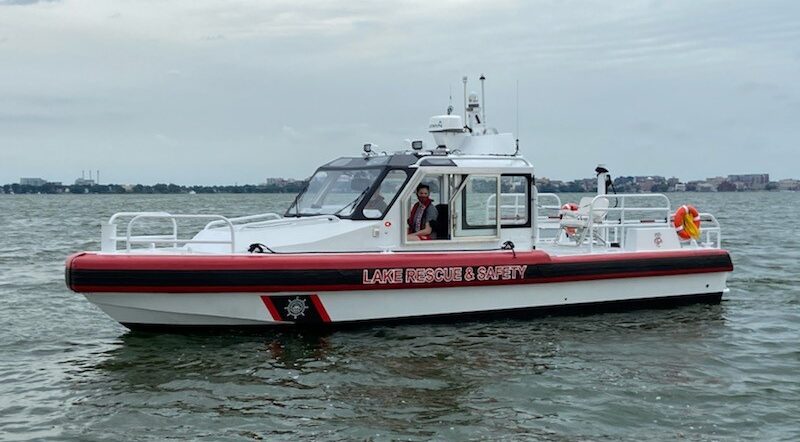By: John McHugh, UWPD Emergency Management
 Warm weather and sunshine are finally here, and that means spending more time doing activities on or near the water. While it can be tempting to dive headfirst (pun intended) into activities like swimming, boating, and kayaking, it’s important to remember how to stay safe and ensure a fun, accident-free experience.
Warm weather and sunshine are finally here, and that means spending more time doing activities on or near the water. While it can be tempting to dive headfirst (pun intended) into activities like swimming, boating, and kayaking, it’s important to remember how to stay safe and ensure a fun, accident-free experience.
Wearing a life jacket when in the water is always smart regardless of your swimming ability. Every year, there are more than 4,000 unintentional drownings in the United States. That’s an average of 11 drownings each day. Many of these drownings are preventable. Even if you’re a good swimmer, you can get tired, the distance you need to swim can be greater than it looks, or the water depth can change suddenly. In these situations, life jackets can keep you safe.
Rules & Regulations
There are several state and federal laws regarding life jackets — and it’s important to know and understand them:
- All vessels (including canoes, kayaks, and paddleboards) must have at least one U.S. Coast Guard-approved wearable life jacket for each person on board.
- If a vessel is 16 feet long or more, it must also have a throwable flotation device onboard.
- Every person on a personal watercraft (like a WaveRunner or Jet Ski) must wear a USCG-approved life jacket.
- Sailboards and windsurfers are exempt from life jacket requirements but are highly encouraged to wear one.
- Federal law requires children under the age of 13 to wear a USCG-approved life jacket while in an open vessel on federally controlled waters.
While your life jacket is your first line of defense, it’s also important to never swim alone. Even when swimming in familiar waters, using the buddy system means both of you have someone there who can help in case of an emergency
Staying Hydrated
Even though you may be surrounded by water, you can still get dehydrated. Drinking enough fluids is one of the most important things you can do to prevent heat illnesses. Remember to hydrate before, during, and after participating in water activities. To stay hydrated, drink water regularly even if you don’t feel thirsty and prioritize consuming hydrating snacks like fruits and vegetables with high water content. Also, avoid consuming alcohol when on or near the water. Not only does alcohol dehydrate you, but it also impairs judgment, coordination, and reaction times and increases the risk of accidents including drowning.
Getting Help
 Even with all of these precautions, accidents on the water can still happen. That’s why UWPD Lake Rescue & Safety exists — the unit serves as a rescue service for UW-Madison students and the greater Madison community on Lake Mendota. You can check the current conditions of Lake Mendota and the hours of operation for the Lake Rescue & Safety Lifesaving Station by clicking here. Should you experience an emergency on Lake Mendota, call the Lake Rescue & Safety emergency phone number at (608) 262-3505.
Even with all of these precautions, accidents on the water can still happen. That’s why UWPD Lake Rescue & Safety exists — the unit serves as a rescue service for UW-Madison students and the greater Madison community on Lake Mendota. You can check the current conditions of Lake Mendota and the hours of operation for the Lake Rescue & Safety Lifesaving Station by clicking here. Should you experience an emergency on Lake Mendota, call the Lake Rescue & Safety emergency phone number at (608) 262-3505.
Summertime is perfect for enjoying warmer weather and getting out onto the water — but it is important to stay safe while doing so. By following these simple safety tips and always wearing a life jacket, we can all enjoy a fun and worry-free summer on the water.
